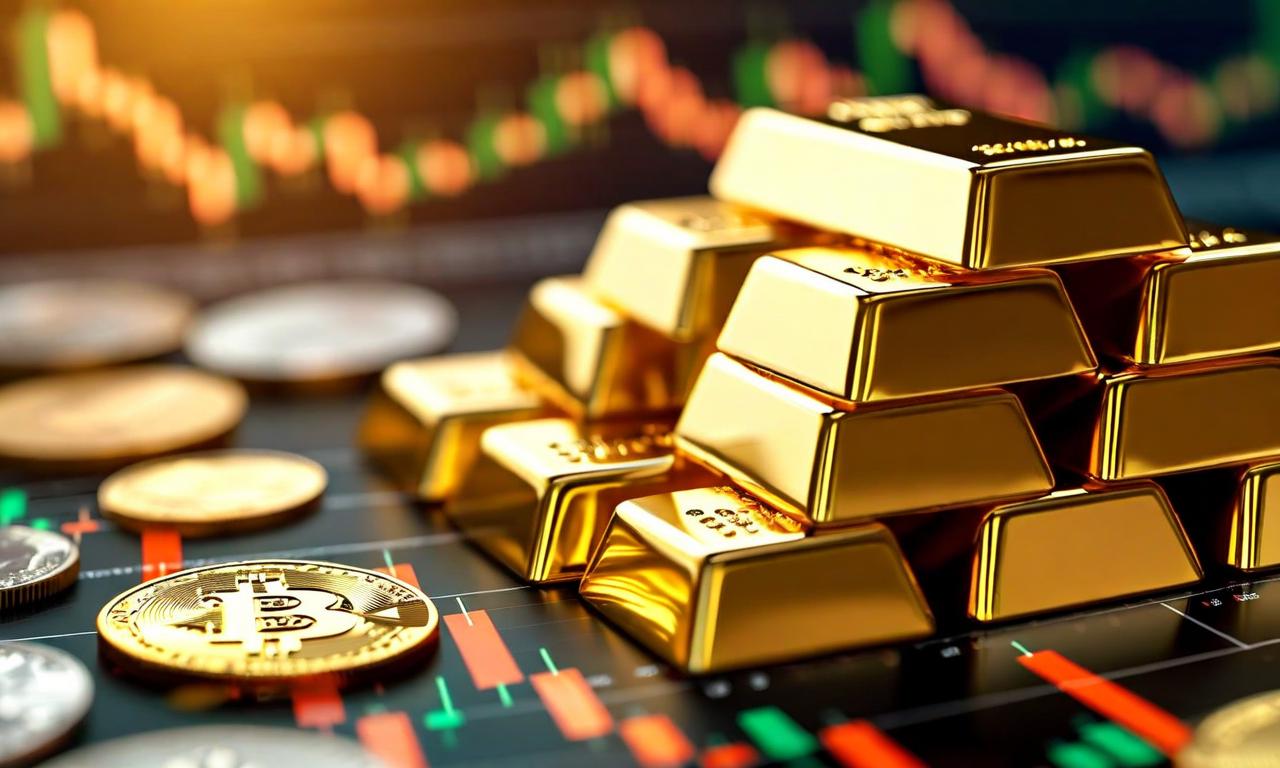Gold Surges Past $4,000, Sparking Historical Comparisons and Market Analysis
Gold prices have surged to over $4,000 per ounce, marking a 53% year-to-date increase and a 27% gain from the previous year. This unprecedented rise is drawing parallels to historical events that signaled major economic and political transitions. Factors driving the surge include global uncertainty, investor FOMO, and expectations of US interest rate cuts. The price increase raises concerns about wealth transfer from the poor to rich elites and potential political upheaval.

*this image is generated using AI for illustrative purposes only.
Gold prices have skyrocketed to unprecedented levels, breaking the $4,000 per ounce barrier and igniting discussions about its historical significance and market implications. This surge has caught the attention of investors, analysts, and historians alike, prompting a closer look at what this meteoric rise might signify for the global economy and political landscape.
Record-Breaking Performance
Gold's performance has been nothing short of extraordinary:
| Metric | Value |
|---|---|
| Current Price | Over $4,000.00 per ounce |
| Year-to-Date Increase | 53.00% |
| Previous Year's Gain | 27.00% |
This dramatic ascent has not only set new records but also raised questions about the underlying factors driving such momentum.
Historical Perspective
Arnaud Bertrand, co-founder of HouseTrip, has drawn parallels between the current gold price surge and significant historical events. He suggests that such sharp increases often indicate a profound loss of confidence in existing monetary and political systems. Bertrand cites several historical examples:
- The Roman Empire's Crisis of the Third Century
- The fall of Rome
- The French Revolution
- The end of the Bretton Woods system
According to Bertrand, the doubling of gold prices in reserve currencies is a rare occurrence that typically marks transitions between eras of power. This historical context adds weight to the current situation, suggesting that we may be witnessing a pivotal moment in economic history.
Wealth Transfer and Political Implications
The rise in gold prices is not just a matter of investment returns. Bertrand points out a concerning aspect of this trend:
- Rising gold prices can transfer wealth from the poor to rich elites who protect their assets with gold.
- This wealth disparity has the potential to ignite political upheaval.
These observations highlight the broader socio-economic implications of gold's price movements, extending beyond mere market dynamics.
Market Analysis
Several factors are contributing to gold's current rally:
- Uncertainty Levels: Investors are flocking to gold as a safe haven amid economic and geopolitical risks.
- FOMO Effect: Tim Waterer of KCM Trade notes strong 'fear of missing out' momentum driving prices higher.
- Investment Demand: Anuj Gupta from YA Wealth Global attributes the surge to:
- Political upheaval
- Global economic uncertainty
- Expectations of US interest rate cuts
These factors combine to create a perfect storm for gold prices, pushing them to record highs.
Conclusion
The unprecedented rise in gold prices serves as a barometer for global economic sentiment and geopolitical stability. While it presents opportunities for some investors, it also raises concerns about wealth inequality and potential social unrest. As the situation continues to evolve, market participants and policymakers alike will be closely monitoring gold's trajectory and its implications for the broader financial landscape.





























